Not quite a hundred, but still more than thirty years ago, I was in Australia as an exchange student. I don’t think I have ever told stories from that time, because back then, we still took pictures on transparent rolls of film, which I can’t upload here as easily as digital photos. If any of you have a slide-to-digital conversion machine and are interested in my photos from the 1990s, please feel free to contact me. (The more academically inclined among the readers are quick to shout: “Oh no, not more of your personal anecdotes! We want to learn about history. Just like university, but funnier.” We’ll get to that, I promise.)
The best roll of film, the one I photographed while jetting over the Olgas in a small plane, unfortunately got torn anyway. This used to happen more often than not, because you had to rewind the films by hand, but not apply too much force. Other common problems were accidental exposure to light, water damage or confiscation by the border police.
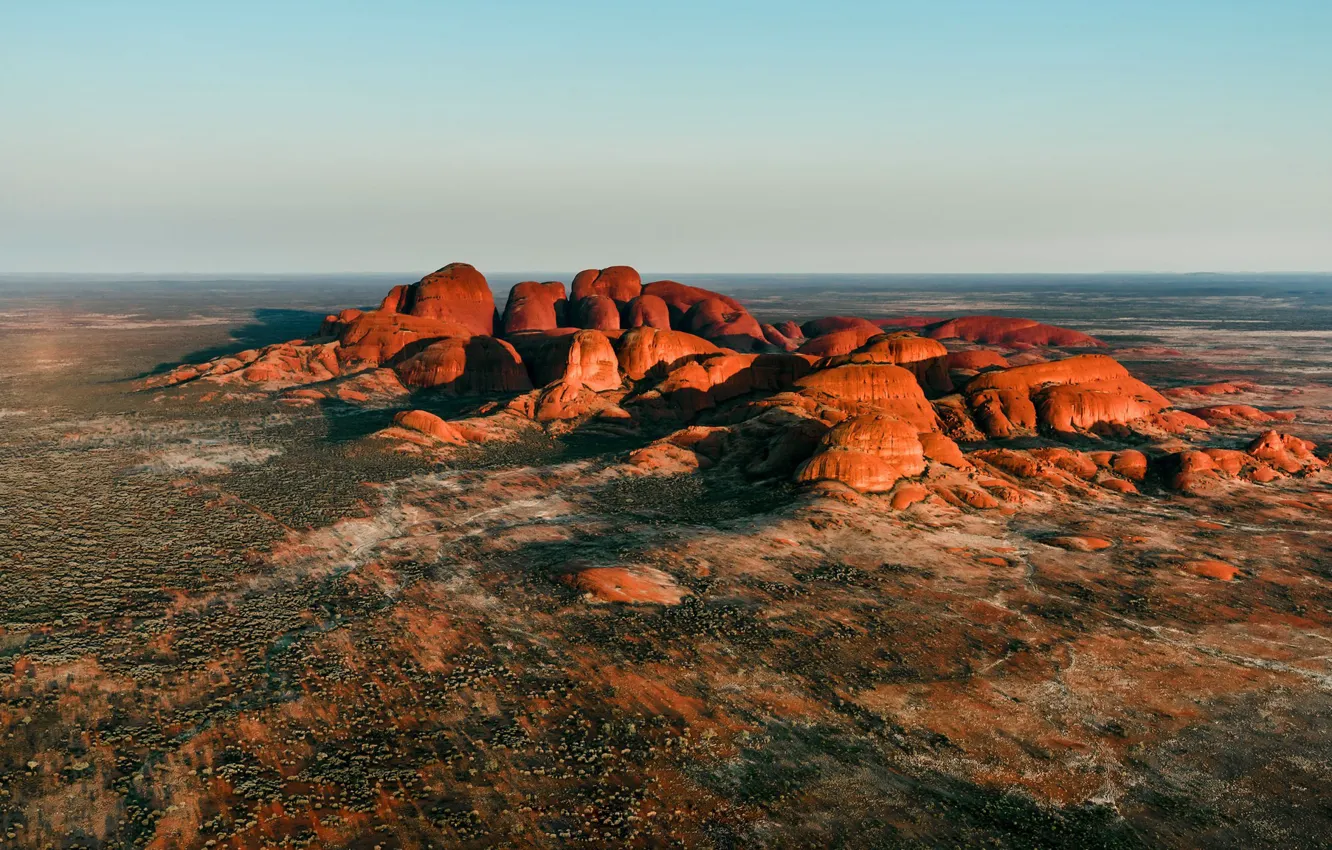
This was just after the Second Gulf War. That was the one with Saddam Hussein, Norman Schwarzkopf, Colin Powell and so on, you probably remember. It was about Kuwait or about oil, which may have been the same thing. Some of these small states are nothing more than glorified gas stations, after all.

The Propaganda Minister didn’t actually step onto the scene until the Third Gulf War, but he just brings back such fond chilhood memories. Like Maya the Bee. Or Vicky the Viking. By the way, I was never quite sure if Vicky was a boy or a girl, which today somebody would surely turn into a gender drama and want to ban it from television.
Anyway, at the time, the uncle of my Australian host family explained to me that everything that ever went wrong in the Middle and Far East was the fault of “some stupid fucking pommy.” The latter being an endearing Australian term for British people.
This blog and especially this little history series have been criticized for constantly blaming the Germans for all historical mischief. But today, for once, I am going along with the theory of British collective and total guilt. (But honestly: If the Germans had not defeated the Romans in the Battle of the Teutoburg Forest, Pontius Pilate would never have had such an exaggerated fear of the uprising in Palestine. And Jesus could still be alive!)
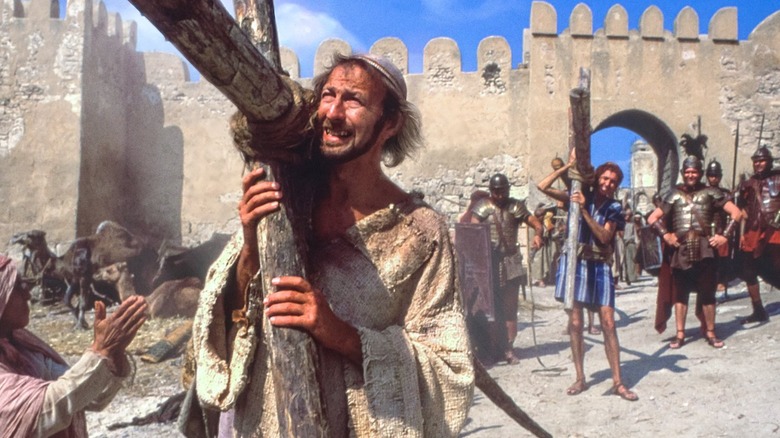
You know what? If I have already stepped into controversial waters here, we might as well stick to Palestine.
So, originally the area east of the Mediterranean, also called the Levant, was of course Roman. You can see that when you walk along the beach there and come across Roman aqueducts and amphitheaters, for example in Caesarea in what is now Israel.
Perhaps there was someone else before the Romans, but I can’t take that into account. If the Carthaginians, Hellenes, Macedonians, Seleucids, Ptolemies and Phoenicians do not have the decency to use legible Latin script, then they will stay on the sidelines of this story.
There, on the sidelines, we also have to leave the many details that may have occurred in the small time span between King Herod and World War I. To put it crudely: The Roman Empire collapsed and the League of Nations had to reorganize the world. (The League of Nations was the forerunner of the United Nations, only without the Cold War. Instead, it had a few other quirks, but who of us is without flaws?)
From the bankruptcy estate of the former great empires (Austria-Hungary, the Russian Empire and, in this case, the Ottoman Empire), many new countries were founded in this period immediately after World War I. We have already covered examples such as Czechoslovakia, the Free State of Fiume, the Kingdom of Mongolia, Finland, Baranya-Baja and Tannu-Tuva, Hungary and Greater Romania.
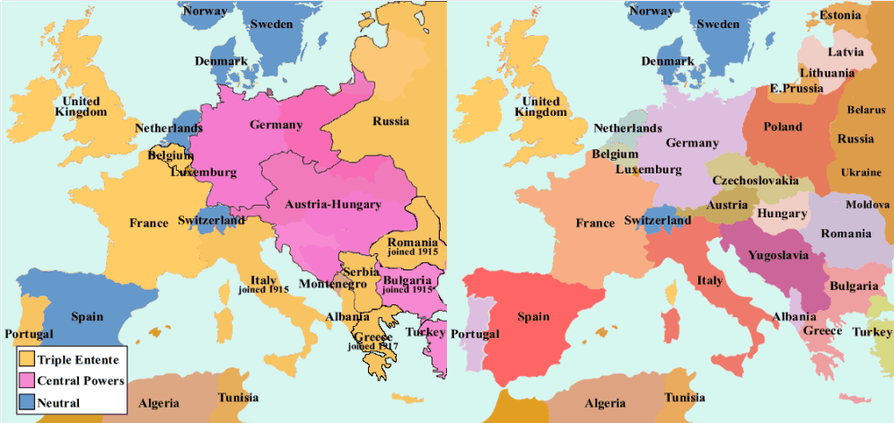
“Self-determination of peoples” was the buzzword of the time, and anyone who wanted to could declare independence. Well, at least every white European. (The Mongols benefited from their collaboration with the Nazis.)
On the other continents, things were slightly more complicated.
For sub-Saharan Africa, the Europeans agreed that such complicated things like independence, countries and administration were not for Africans. “They don’t really want to be bothered with all that,” said the colonial masters, just as today the representatives of the export industry say that one should “not impose Western values on the world.” As if the Chinese would gladly let themselves be tortured and imprisoned so that Volkswagen and Apple can make even higher profits. Cynical nonsense.
In the Middle East, people could not be so easily labeled as subhuman. After all, they had invented mathematics, medicine, agriculture, astronomy, the Bible and beer.

In the Ottoman Empire, they even had railroads already. Many, great, beautiful railroads. To almost every place you’d ever want to visit in your lifetime.
Most likely, you are familiar with the Orient Express, if only from Agatha Christie’s crime novel or one of its many film adaptations.
No wait, sorry, wrong murder on the wrong train! Here is the one:
Less known (and with no film adaptations at all) is the Balkanzug, a German-Imperial competitor train, connecting Berlin with Constantinople exclusively across the territory of allied countries.


But once you go to to the Bosporus, the real fun was just about to start.
Having advanced through the Anatolian mountains to Aleppo (marked on the above map with the Turkish name of the city: Haleb), one could hop on the Baghdad Railway and chug through Mosul to Baghdad, Babylon and Basra on the Persian Gulf. This delighted the beach tourists, albeit a few decades late because construction was repeatedly interrupted.

But then, it was a complicated engineering project. For that reason, the Ottomans handed it over to the Siemens Corporation from Germany. Or maybe that was due to bribes, one of the core competencies of Siemens AG until this day. (When asked which countries are the most corrupt, I don’t know why Germany doesn’t come to people’s mind. At least half of the companies in the main stock market index DAX have been involved in criminal activities.)



For those more interested in prayers than in parties on the beach, you could get the train towards the south from Aleppo, going to Damascus, Haifa, Jerusalem and Medina. The last section to Mecca, which was really the reason for the entire project, was never realized because – well, we are going to get to that later. But you can already guess that the British are to blame.
I have personally been to the old strain stations in Damascus and in Jerusalem, both of which don’t look very active any longer. And they are not even connected with each other anymore. Maybe it’s true when people say that everything used be better in the good old days.


That project, the Hejaz Railway, was also managed by Germans, including Heinrich August Meissner and Paul Levy. The latter suffered a tragic fate. As a railway engineer (rising to the rank of director) of the German Reichsbahn, he was deported to Auschwitz concentration camp by the same German Reichsbahn in 1943. – As I have been telling you many times: Don’t ever think that your employer is your friend.
Now you will understand the historical background when you come across small train stations while hiking in the Arabian desert next weekend, wondering why they look exactly like those in the Neckar Valley or in Franconia. Even with pitched roofs against the snow and chimneys against the harsh winters. You never know with this capricious climate. (This is typicsl of Siemens. They even cheat when building a railroad to the Holy Prophet.)
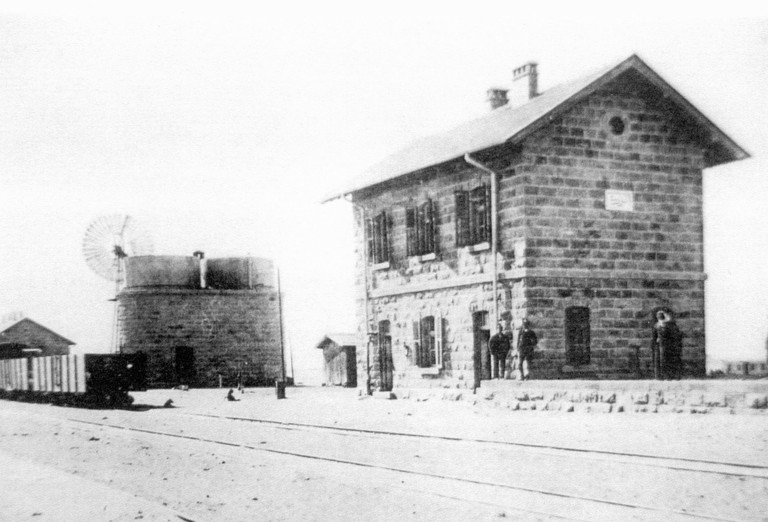
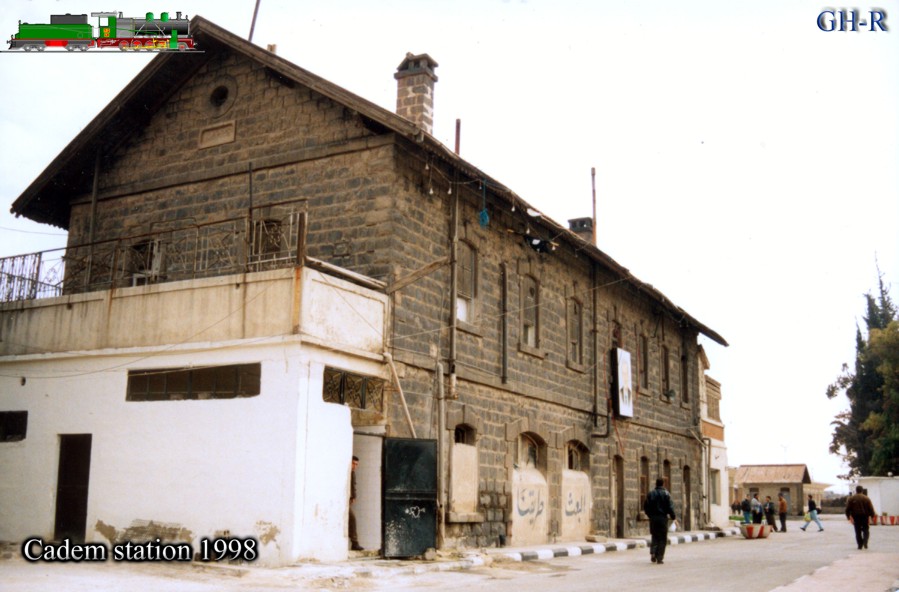
The photos are from this website, which lists all the stations on the route from Damascus to Medina, including the sad railroad cemeteries. (You can really find railroad freaks all over the world, which emphasizes the cosmopolitan and peace-building nature of this mode of transportation.)
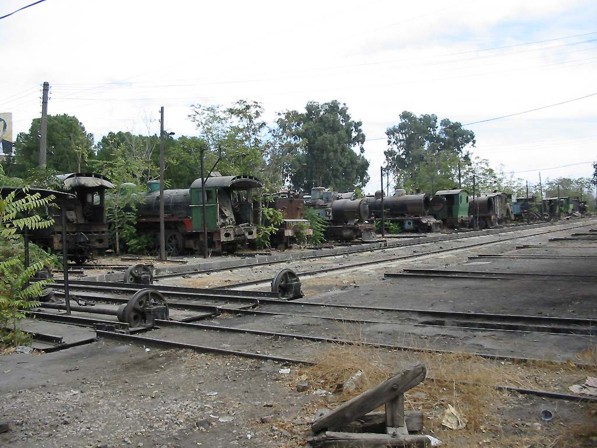
Speaking of friendship between the peoples of the world: We had been talking about the division of said world after the Great War, with which, as this series shows month after month, so much
began that has scarcely yet left off beginning. And – that’s actually what the little excursion into the history of the railway was supposed to illustrate – I had just been explaining why the Europeans were not able to subjugate the Arabs quite as obviously as they did the Africans.
The solution was that certain territories were effectively declared minors: They were to be granted independence at some point, in the distant future. But because they were not yet ready, they were declared protectorates or mandates in the meantime. Grown-up states were to be placed at their side, like a guardian.
In the Middle East, France and Great Britain took on this burden. Together, they bent over a map and drew the Sykes-Picot Line. Just like that. “It’s all sand anyway,” the diplomats thought, because they had no idea about Sunnis, Shiites, Druze, Kurds, Zoroastrians, Sufis, Copts, Marsh Arabs, Mandaeans, Alawites, Chaldeans, Nubians, Yazidis, Jews, Arameans, Assyrians, Berbers and the Templars.
That’s what the gentleman from Australia had alluded to.
Europeans, who proudly declare every old compost heap to be a Celtic wall, had never heard of places of advanced civilization like Philae, Hegra, Ctesiphon or Hatra. And let’s be honest: Who of us knows any of the places? (The pictures are listed in the sequence of the place names.)

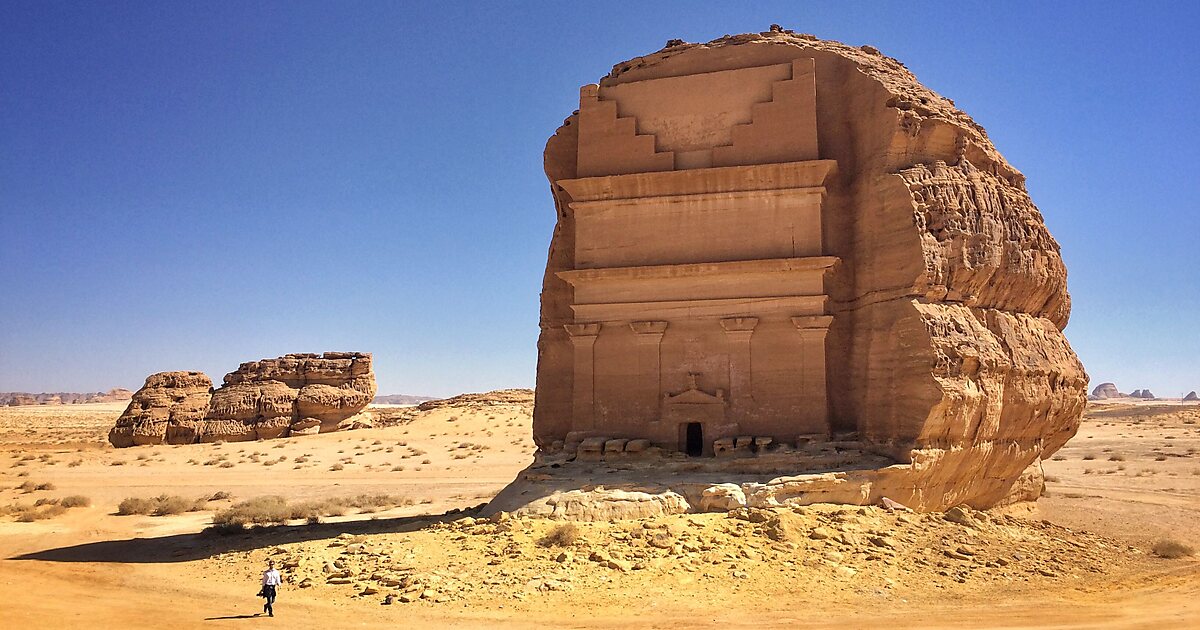


One of these conferences at which Europeans sought to plant the seeds for future Middle East conflicts took place in San Remo, Italy, in April 1920. France took guardianship of the territory that would later become Lebanon and Syria. Great Britain took charge of the area that would later become Israel, Palestine, Jordan, Iraq and Kuwait.
The British territory was larger. In return, France received a quarter of the oil produced in northern Iraq (the province of Mosul). In general, one could almost get the impression that the great powers were more concerned with oil than with the development of statehood, but we don’t want to become cynical here. Surely, they were driven by purely noble intentions. (Besides, France soon invented atomic energy and was thus able to withdraw from the Middle East. For uranium, Africa is much more important.)

Because the conference took place in San Remo and because the Western states divided up the Middle East among themselves like a pizza, “San Remo” is still a popular name for pizza parlors today. And that’s why pizzas – in contravention of the mandatory EU-wide decimal system – may still be cut according to the British-imperial hexal, octal or duodecimal system. (This is part of the popular series “Facts you’re surprised you haven’t noticed yourself”.)
The Kurds did not find this funny at all, because yet again, they had missed out on statehood. But this might be a topic for July 1923, when we deal with the Treaty of Lausanne. The Armenians did not find this funny at all. But most of them were dead. The Jews did not find this funny at all, especially when the Arabs suddenly became best friends with the Nazis. But that’s another story.


There were always problems in the British Mandate for Palestine. The Jews wanted a country. The PLO wanted a country. Hamas did not want a country, but didn’t want the PLO or the Jews to have a country either. The Pope wanted control of Jerusalem. The people from Jerusalem complained that the people from Tel Aviv were partying too loud. The Austrians were getting involved. Yogurt prices were going up. Every day, nothing but problems.
Say what you will about the British, but they do have education. So they remembered the old Roman motto “divide et impera” from Latin class and thought: “We’ll do it like in Ireland or in India. We divide the land and let the people fight each other.” The whole thing was an idea by Winston Churchill, who was British colonial minister at the time. We already got to know him in this role.
The British divided the Mandate territory of Palestine along the Jordan River into Cisjordan (today’s Israel and Palestine) and Transjordan (today’s Jordan). This river, by the way, is a disappointingly small trickle. You always read about it in the Bible and in the Tanakh, in the Old Testament and in the New Testament. And once you get there, the river is so meager and tepid that you could easily cross it on foot. But you don’t want to suddenly appear like a prophet, just because of some stupid water crossing story. Nobody needs that kind of stress.

Transjordan became an autonomous emirate and was handed to the Hashemite family. They are directly descended from the great-grandfather of the Prophet Muhammad, but if you have ever been to the Orient, you know that everyone is directly descended from the Prophet Muhammad or one of his relatives, friends or companions. Just like in New England, everyone is descended from the Pilgrim Fathers. And in Europe, everyone is descended from Charlemagne.
During World War II, the Jordanian emir supported the Allies against the Nazis. This was quite remarkable, because Iraq, ruled by his Hashemite brother (also installed by the British), was more on the side of the Nazis, at least at times. (This episode is too convoluted even for me, who is generally not afraid of bouncing back and forth all over the timeline and the world map.) Abdallah was promoted to king in 1946, and Transjordan became the independent Kingdom of Jordan.
This seems to have gotten to King Abdallah’s head, and he went on a crazy spree. A few hours after the state of Israel was established, Jordan (along with Egypt, Syria, Lebanon and Iraq) attacked its new neighbor and annexed the West Bank and East Jerusalem. King Abdallah had himself proclaimed “King of all Palestinians,” but was then shot in Jerusalem in 1951. By a Palestinian. From the circle of the Nazi Mufti, whom you saw above having tea with Adolf Hitler. (Perhaps the Germans are to blame for the Middle East conflict after all?) The king bled to death in the arms of an Austrian nurse. (Austria is not as innocent either as it always pretends to be.)

By the way, I once met Queen Noor of Jordan. It was 2009, and I was studying economics at the London School of Economics. I dropped out later because mathematics in English was too difficult. It’s funny, because I was studying philosophy in English at the same time, and I would have been willing to bet that philosophy in a foreign language is more complicated than mathematics. But then, it was rather advanced mathematics. On top of that, they were using these stupid British units of measurement, like ounces and shillings.
Anyway, at LSE there were lectures every evening, often with famous speakers, some of them even interesting. And one evening, there was a talk about the abolition of nuclear weapons. It was November and London, therefore cold and rainy, and I didn’t feel like going back to my little mouse-infested room in Tottenham. (I didn’t want to tell the landlord about the mice after he had killed the first ones and said that the dead mice had to be left in the hallway as a deterrent. They looked like the guinea pigs that people eat in Peru.)
Abolishing nuclear weapons was a topic close to my heart in 2009. Because in April of that year, I had been in Prague to attend Barack Obama’s speech in which he presented his plan for a world free of nuclear weapons. And on the train there – it was a coincidence, I swear – I had met three Iranian lawyers who were also headed to Prague, because they had an appointment with Hillary Clinton. Something about human rights. And two months later, in June 2009, the Green Revolution erupted in Iran (unfortunately just as unsuccessful as the nuclear abolition plan).
As you can tell, I was a bit interested in politics at the time, so I flew to Iran, went to demonstrations, got beaten up by the police, dodged sniper bullets, and was ultimately arrested along with one of the Iranian lawyers.
Naturally, we were detained and interrogated separately. (I didn’t meet him again until years later.) But there’s no point in lying if you can’t assume that the other person is making up exactly the same lie. So I had to tell the truth when asked how we had met:
“On the train from Amberg to Prague.”
“And why did you travel to Prague?”
“I wanted to attend a speech by Barack Obama.”
You should have seen the looks on the faces of the Iranian intelligence officers in the room! Frankly, I didn’t see them myself. I was blindfolded the whole time. Anyway, what followed was a very intense questioning about why the U.S. president had invited me of all people to his speech (it was a public event), what he had said (it was in the newspaper and probably on YouTube), and about my personal opinion on Iran’s nuclear program. The ensuing discussion was so interesting that I am saving it for the book I may one day write about this little episode.
My lawyer and prison friend, Mohammad Mostafaei, has written a book, so far only available in Norwegian. But I have heard that Norwegian is very easy to learn. If the country wasn’t so expensive, I could try studying mathematics there again. But I think I’ll do sociology in Spanish first.
By the way, the first room in which I lived in London was smaller than the cell at Evin prison. That shows you how crazy the real estate market there is. But then, the whole idea of private land ownership is rather crazy.
In any case, that’s why I didn’t want to go home that night and stayed at university instead. I was quite puzzled when armed bodyguards were present in the lecture hall. And that a talk about abolishing nuclear weapons drew such a large crowd. And that everyone wanted to get a selfie with one of the speakers. – Especially in the UK, where people get to see a Queen every day. Every time they lick a stamp or hold a banknote in their hand. By the way, all the money and stamps have to be destroyed and reprinted now. And over 100,000 mailboxes in the country have to be replaced because the Queen’s initials are on them, which the new king obviously can’t tolerate.
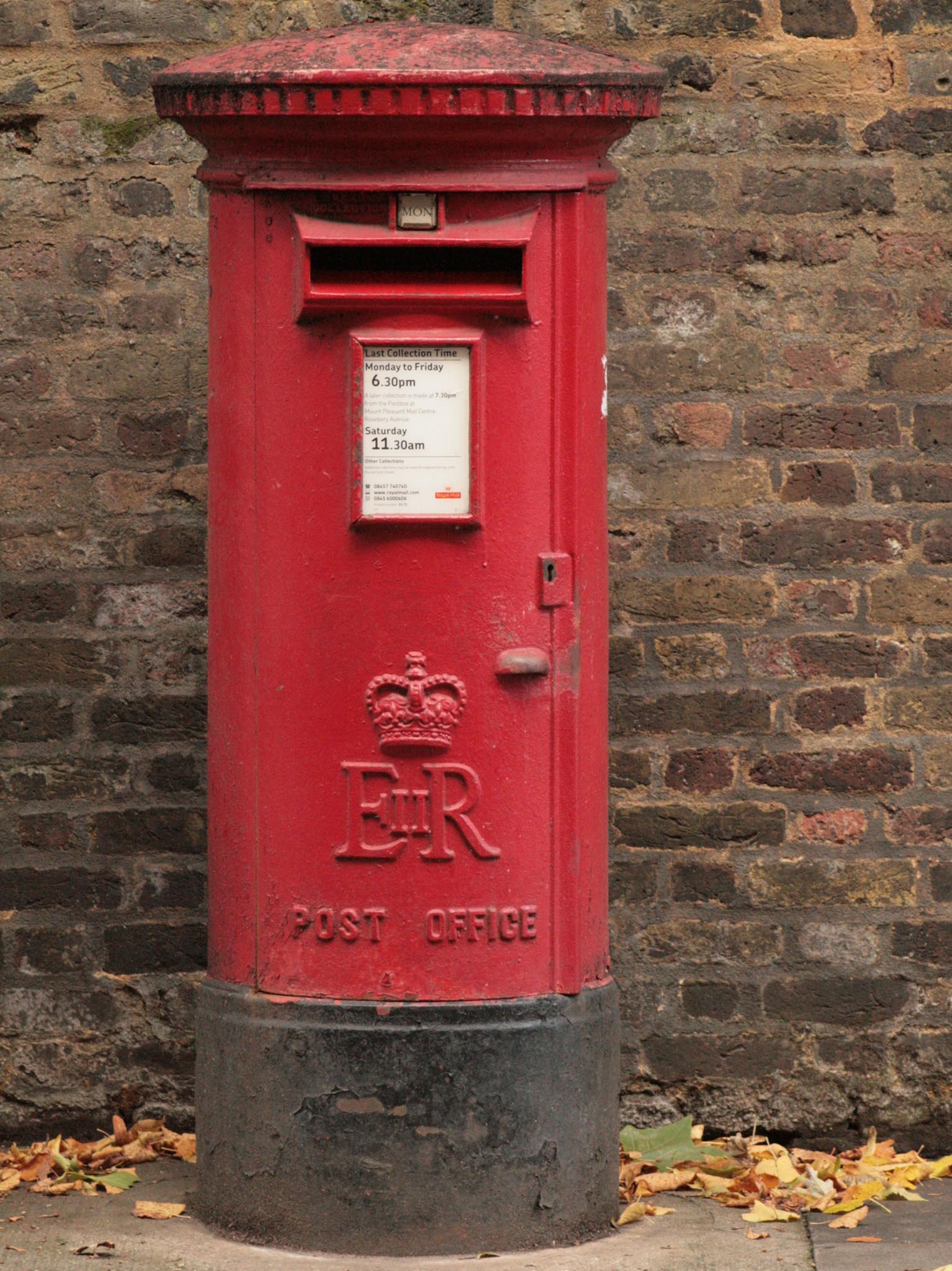
Whoa, now I really digressed big-time!
Almost like Švejk. But he had the excuse of alcohol, at least.
This little history series is really supposed to be about events that took place exactly 100 years ago. So it is rather fitting that on 25 March 1923, the formal separation of Cis- and Transjordan took place, finally providing us with the date which serves as the pretext for these far-fetched connections. But on this blog, after all, we are always more about the big picture. The context of humanity. The rail tracks on which the train of world history is roaring forward.
If only that train were still going.
Alas, it is lying in the desert sand, rusting instead of roaring. For the last 100 years.

Because the First World War, the end of the Ottoman Empire, the division of the region into new areas, territories and states, all this sealed the end of the railroad.
Ad it was this man’s fault: Thomas Edward Lawrence, a British officer in World War I, later known (and turned into a movie) as “Lawrence of Arabia.” He was an avid motorcyclist and had an almost pathological loathing for railroads.

The railroad, in Lawrence’s view, was an instrument by which the peasantry and the petit bourgeoisie could go on journeys and adventures to which they were not entitled. “Any housewife from Hackney can now visit the holy sites” and “soon, they’ll have Tupperware trips to Tripoli,” he raged, blowing up railroad bridges, embankments, and trains.

The psychopath with the methods of a terrorist had managed to sell his personal crusade against the railway as politically advantageous to the British Crown. The argument went like this: Great Britain was at war with Germany. The Ottoman Empire was allied with Germany. So you hurt Germany by hurting the Ottomans. The Ottomans ruled the entire Middle East, from Cairo to Karbala. So the British would equip the Bedouins living there with weapons and incite guerrilla warfare. The Ottomans would have to send troops into the desert, thus being left with fewer troops to support the Germans at Ypres or Verdun. That’s the short version.
Because Lawrence promised the Bedouins and the Arabs that they would all get their own states and become kings, they played along. Moreover, the Bedouins in the Arabian desert had always been against the railroad, because they used to enjoy a monopoly on pilgrim caravans to Mecca and Medina. They also had a monopoly for transporting goods to cities that could not be reached by ship. So the railroad was bad for their camel business.
The British and French were not only concerned with the war (which would never have been ignited in the Middle East without them in the first place). They were also suspicious of the railroad to the holy sites of Islam because it made it easier for Muslims from their colonies (from Algeria to Kashmir) to make the hajj, the pilgrimage. Islam at that time was different from the one we know now, where mosques wait peacefully in front of the railroad crossing. At that time, mosques were meeting places for the political opposition, for burgeoning liberation movements, even for revolutionaries. The Muslim Brotherhood is probably the best-known example.

And after World War I, oil also began to play a role.
If, like Saudi Arabia, which was established in its current form only in 1932, you live exclusively off petroleum and diesel, you naturally have no interest in rebuilding the railroad.
Not unlike the murder on the Orient Express, the Hejaz and Baghdad Railway died from many stabs, carried out by many hands, for a bewildering array of reasons.
And thus, 100 years after World War I, derailed locomotives are still lying in the desert. The drier the climate, the longer the old stuff lasts. Like in the ghost town in the Atacama Desert, where even decades later it looks as if the population had only left yesterday. I even found a few locomotives there, which provides at least some thematic connection in all this otherwise nonsensical jumping from continent to continent.

With the new countries that emerged after World War I, the memory of the common past, when they had all been part of one large rail network, quickly faded. The countries wanted to create their own national identities; cultural exchange was not desired. Peace was no longer dependent on good relations with neighbors, but on good relations with London or Paris, later with Washington or Moscow. No Arab wanted to take the train through Israel, no Jew wanted to take the train through Syria to Iraq. Most borders were sealed. Hostile minefields instead of generous train station buffets.
And thus disappeared the good old world, when you could buy a ticket to Baghdad at the train station in Bromley, Braunschweig or Brno without any trouble. Try that today! Dunkirk-Diyarbakir-Damascus or Aarhus-Aleppo-Amann are also no longer offered.
Today, if you want to visit the historical sites in Mesopotamia, you have to hitchhike. (Oh yes, that is possible in the Middle East. Example 1, example 2, example 3 and hopefully, some day, example 4 on this blog.)
Among the desert cities listed above, you may have missed one. The only one that is really known all over the world: Petra, the capital of the Nabataeans, in what is now Jordan.
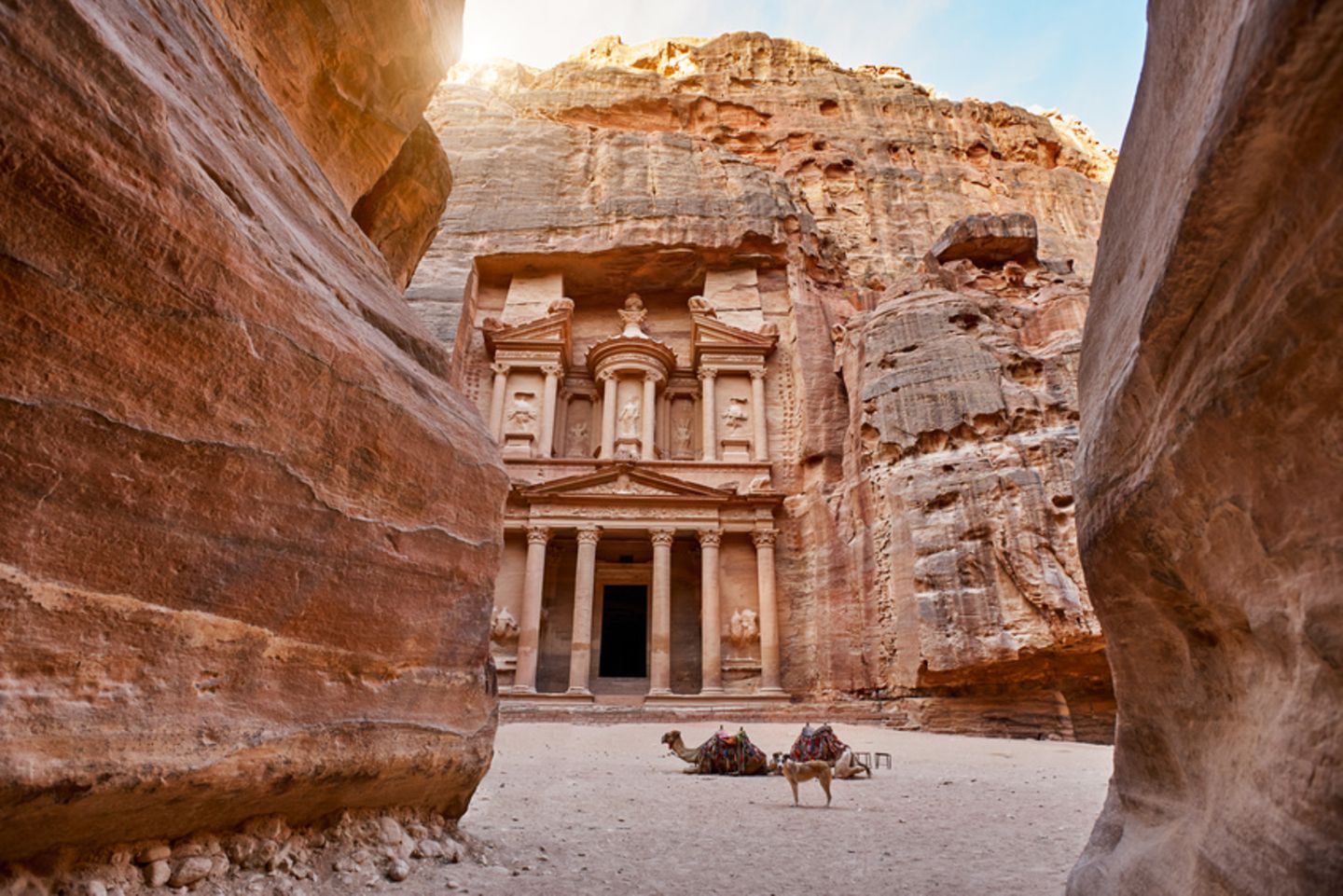
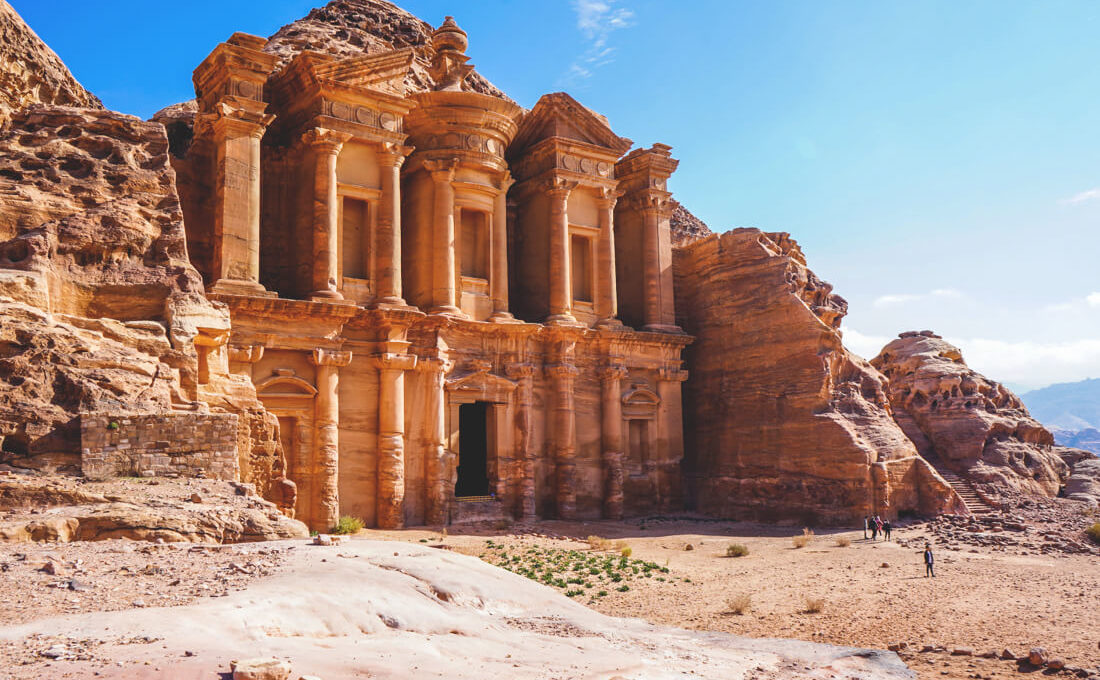

I have even been there myself. It has become a bit touristy since the Hashemites took over from the Nabataeans. But maybe that’s the fault of UNESCO. I mean, these guys are interfering everywhere instead of fighting world hunger. The people of Dresden have something to say about this.
And I have to admit, even if I like to skip tourist highlights and take the routes off the beaten track instead: Petra is absolutely worth the visit. It’s not just the one canyon and the one temple you know from TV. There are dozens of magnificent buildings spread across several valleys. And you can climb around pretty much unsupervised and find a quiet spot on the roof of an ancient palace where, in the setting sun, you can ponder the transience of advanced civilizations.

I went to Petra with two friends. Because all three of us were lawyers, we could even afford a rental car. I was the oldest (which happens to me quite often), so I was supposed to drive and navigate (which happens less and less). I knew we needed to head north from Aqaba, and then surely a sign would point to the World Heritage Site. Easy peasy.
Unfortunately, I took the wrong exit at the very first roundabout and drove onto road no. 65, which goes north very close to the Jordan River. The direction was right, but it was a restricted military area.
Soon, we came to a checkpoint with Jordanian soldiers, who told us in a friendly way that this road was sadly and unfortunately closed to foreigners. But at that time, there was some European or World Soccer Cup, and when they realized that we were from Germany, they only wanted to talk about soccer.
“Where do you want to go?” they asked at one point.
“To Petra.”
“Hm. Wrong road.”
“But this is going north, isn’t it?” I asked, to show that we could talk from professional to expert.
“Yes, but only for military vehicles. Also, there is no road connecting this road and Wadi Musa. So you’re approaching Petra from the wrong side.”
I said nothing.
The soldiers conferred until one said, “If you turn back now, you will lose a lot of time. So we’ll let you through and radio the next checkpoint. Just tell each of the checkpoints that you want to go to Petra. The guys will point you in the right direction.”
No sooner said than done. Two more checkpoints, and at the last one, I received instructions to drive exactly 3 more kilometers after the village of Ar-Rishah, and then turn right onto a desert path that would take us to the correct road after about 20 kilometers.
On the photo you can see the military road in the background, the “desert path” branching off from it (if I had missed that, nobody could blame me, right?), the vehicle not exactly designed for such trips, and me on a hill to explore the area and hopefully spot a route. (This was all in the days before GPS and cell phones and such.)

Most likely, my friends took the photo because they were struck by a sense of impending death and wanted to convey to posterity who was to blame. We almost got stuck in the sand a couple of times. We ran out of water. When I drove through a flock of sheep, the shepherd was not pleased and shot into the air. The car steamed and hissed. But finally we found our way back onto a paved road, road no. 35, the correct, official route to Petra. Great relief! (The friends from back then are still friends, which is really what matters most.)
Anyway, I can tell you that I have rarely been in a country with such friendly and humorous soldiers and border guards. Although we were in Jordan for only one day, I have kept the country in extremely positive memory. I should really visit again, maybe to walk that long hiking trail.
And from Amman, an 80 kilometer long section of the Hejaz Railroad still works. With the original carriages even, it seems.
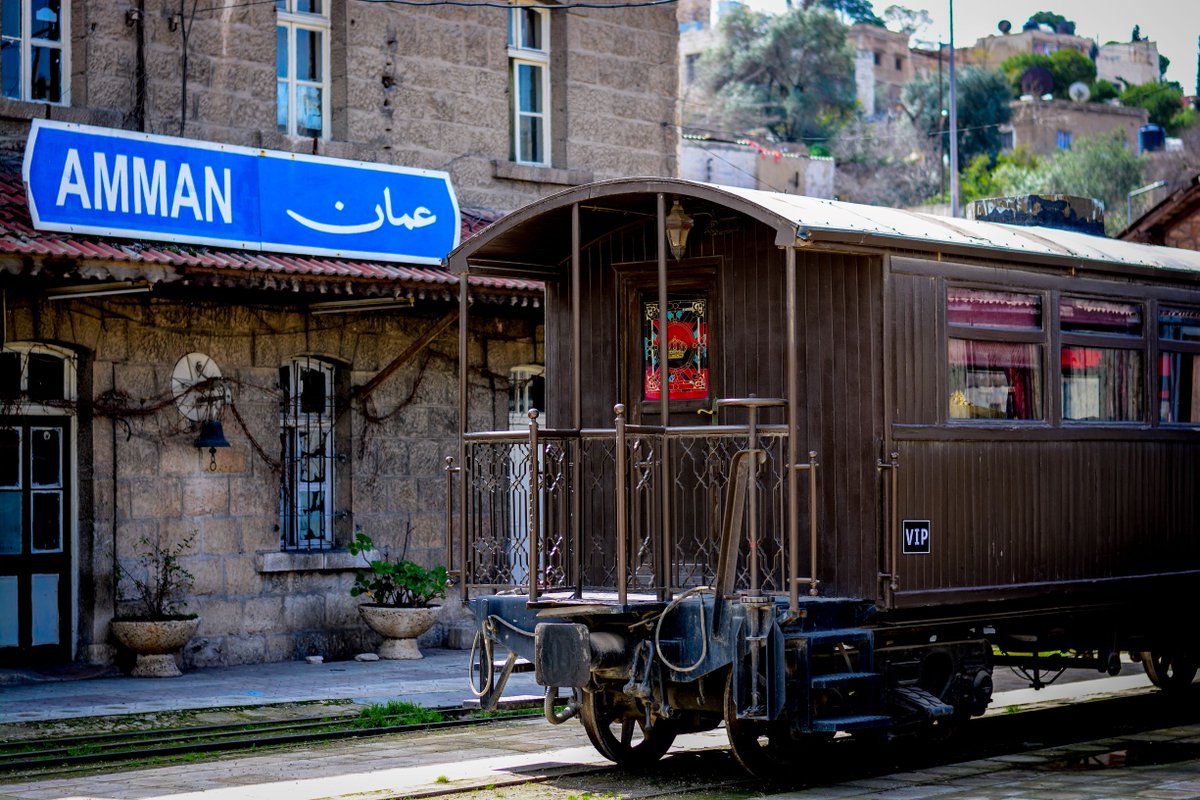
Let’s hope that there won’t be some other mad Englishman wandering by and blowing up this last piece of train history.
Links:
- All articles of the series “One Hundred Years Ago …”.
- More history.
- More railway stories from around the world.
- And more stories from and about Jordan, Saudi Arabia, Iraq, Iran, Israel, Syria, Lebanon and Turkey.




La primera fotografía es simplemente espectacular!
No es mi fotografia, la he robado del internet.
Lo mismo con la foto de Jesus.
Interesante declaración para un abogado. Petra es espectacular al cuadrado!
Si, lo realmente es!
Normalmente soy orgulloso de no visitar los lugares más turísticos, como Machu Picchu, pero Petra realmente vale la pena.
Es war eine Freude, dir durch die Welt, dieZeit und dein Leben zu folgen. Des Foto aus dem Iran sieht übel aus. DieGeschichte verdient mehr als eine Randnotiz.
Ja, da muss ich wirklich mal die damals, unmittelbar nach der Haft niedergeschriebenen Erinnerungen aus der Schublade holen und sehen, was sich daraus machen lässt.
Das ist bestimmt nicht einfach, und vielleicht ist es gut sich dafür Unterstützung zu suchen. Machen viele Autoren so.
Ich müsste vor allem noch einmal nach Teheran, um die Gegebenheiten vor Ort richtig aufzunehmen.
Aber ich fürchte, da wird dann gleich das nächste Abenteuer daraus…
Back in 1993 or so, I actually took the train from Tel Aviv to the old train station in Jerusalem. The cars were quite old. Seats were wooden benches, if I recall correctly. Not too long after that, they closed down the Jerusalem station. (I hope that wasn’t connected to me!)
Of course, they opened up new stations in other places in Jerusalem. The old one is now used for food and culture. You can eat on the tracks without worrying about getting run over. https://www.firststation.co.il/en/
Oh, then I saw the old Jerusalem station exactly between those two events (your trip and the opening of the restaurant).
Well, better a restaurant than for it to be torn down completely.
Notwithstanding that the old trains were much more stylish, I think the train network in Israel has come along quite well in recent years.
I’ve taken the train to and from Haifa in 2015. With the whole network being connected to the airport, it’s really useful. The frequency and speed of the trains is excellent, and I don’t recall it being too expensive.
It’s just the international connections that suck. While researching for this article, I first learned that the railway used to go to Lebanon through tunnels at Rosh HaNikra. That must have been a beautiful ride.
By the way, I also liked the old airport in Tel Aviv better than the new one. It gave you that “Middle East feeling” as soon as you stepped off the plane.
But I guess I am a bit of an old-fashioned guy when it comes to transport infrastructure. I would really prefer to travel to Israel by steamship from Marseilles or Brindisi.
I was actually in the new Ben Gurion Airport while it was still under construction. I often went to Israel as part of a regional exchange program with Hevel Modi’in, and they organized a tour of the construction site for us. It was fun to drive through the airport by car, because it’s so wide and open, and there weren’t any doors yet.
Not just one restaurant – a whole bunch of them!
Yes, it’s vastly improved.
International connections suck because our neighbors don’t seem to want them. I can’t figure out why. :-)
Old airport was great for romance. But for a modern country, we needed the new one. Old one is still used for charters and other flights. Personally, I’ll take the new one any day.
Yeah, I admit that once the number of flights increased dramatically, the old airport was no longer sustainable.
And I guess the people living right next to it didn’t like it either.
Come to think of it, the only international rail connection might be in one of those tunnels from Gaza to Egypt. But I guess that’s neither for you nor me, even with all my adventurism.
You can also try Gaza to Israel or Lebanon to Israel…but it’s not advisable :-))